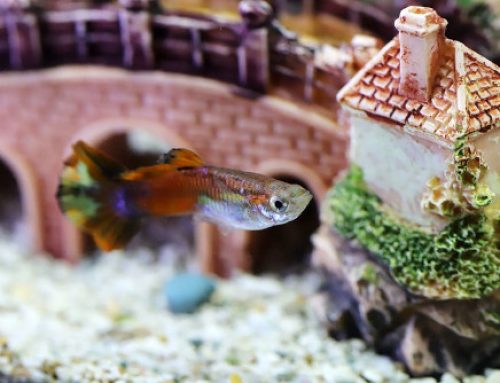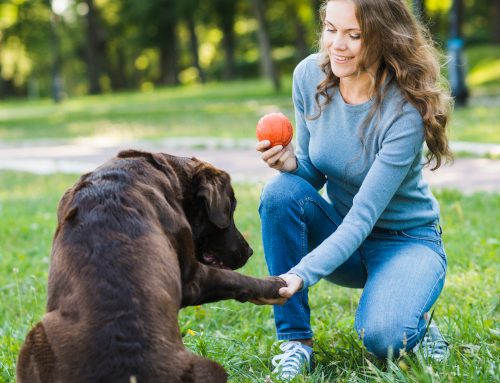Whether you’re a first-time pet owner or an experienced animal lover, this guide will help you to make an informed decision about the best pet for your lifestyle and ensure a happy and healthy life for you and your new companion. We’ll explore the factors to consider when selecting a pet, plus the benefits of pet ownership.
History of Keeping Animals as Pets
The history of domesticating and keeping animals as pets dates back thousands of years. The process of domestication began when humans realized the benefits of forming mutually beneficial relationships with certain animal species. It is believed that early humans started domesticating animals for various reasons including companionship, protection, and hunting assistance.
As civilizations developed, so did the role of pets. In medieval Europe, pets like dogs and birds were kept by the nobility as a symbol of wealth and status. During the Victorian era, pet keeping became increasingly popular among the middle class, leading to the rise of pet ownership as a common practice.
Today, pets are an integral part of many households worldwide, providing companionship, and emotional support. The domestication and keeping of animals as pets have evolved over centuries, reflecting the changing roles and relationships between humans and animals.
Pets as Family
Pets can bring us a great deal of joy, companionship, and love into our lives. As many pet owners know, our furry (or scaly) friends are often treated as members of our families, providing comfort and support through life’s ups and downs. In fact, studies have shown that pets can impact our physical and mental health in positive ways, including reduced stress levels, increased exercise, and improved social connections.
However, it’s important to remember that owning a pet is a significant responsibility that requires careful consideration and planning. Choosing the right pet for your lifestyle is crucial for ensuring you and your new companion have a happy and healthy life together. A pet that doesn’t match your lifestyle can result in frustration, stress, and a poor quality of life for you and your pet.
Available Living Space
One of the top considerations when choosing a pet is your living space. For example, if you live in a small apartment, a large dog may not be an excellent choice. Similarly, if you have a large yard and plenty of outdoor space, a high-energy dog that requires a lot of exercise could be a great fit. You’ll want to consider your available space and how your pet will fit into your living environment.
Match Your Lifestyle
Your lifestyle is another crucial factor to consider. Are you a busy professional with a demanding work schedule, or do you have a more flexible lifestyle with plenty of free time? Pets, such as dogs, require significant amounts of time and attention, while others, such as cats or fish, maybe more low maintenance. It’s essential you choose a pet that matches your lifestyle and schedule so that you can provide the care and attention that your pet needs.
If you enjoy spending time outdoors and engaging in physical activity, a dog that loves to run and play may be a great match for you. On the other hand, if you prefer a more relaxed lifestyle, a cat or a smaller, low-energy dog may be a better fit. It’s important to consider how much exercise and activity your pet will require. And to make sure you can meet the activity levels they need.
Pets, like people, have unique personalities and behaviors that make them who they are. Understanding these differences can be helpful in choosing the right pet for your lifestyle. While some pets may be friendly and outgoing, others may be more independent or reserved.
Dog Personalities
When it comes to dogs, there are many different breeds with varying personalities and behaviors. For example, some dog breeds, such as Golden Retrievers and Labrador Retrievers, are known for their friendly and outgoing personalities, while others, such as Chow Chows and Greyhounds, can be more reserved and independent. Understanding personality and behavior traits of dog breeds can help you choose a dog that matches your lifestyle and personality.
Cat Personalities
Similarly, cats also have distinct personalities and behaviors. Some breeds, such as Siamese and Persian cats, are known for being more vocal and demanding, while others, such as the Maine Coon, can be more independent and laid-back. Your consideration should be given to these personality traits to choose a cat that fits well with your lifestyle and preferences.
Other Pet Personalities
Other pets, like birds, rabbits, reptiles, and small animals like hamsters and guinea pigs have unique personalities and behaviors. Birds, for example, can be social and interactive, while reptiles may require more specialized care and handling. You will want to take the time to research the specific needs and personality traits of different pets to make an informed decision about which pet is right for you.
Pet Adoption and Ownership
Adopting a pet can be a rewarding experience that benefits the animal and the new owner. However, the adoption process can be overwhelming, especially if you’re new to pet ownership. In this section, we’ll provide an overview of the adoption process and explain why it’s important to interact with a pet before adoption.
The adoption process may involve visiting a shelter or rescue organization. Completing an application, and possibly attending an interview or home visit may also be required. The process can vary depending on the organization and the type of animal you’re interested in adopting. Ask questions beforehand to ensure that you’re adopting from a reputable organization that prioritizes the well-being of the animals.
Spending Time with Prospective Pets
A necessary part of the adoption process is interacting with the pet before adoption. Taking this time can help you get a sense of the animal’s temperament, personality, and energy level, and ensure that there is a good match for your lifestyle. Make it a point to spend time with the animal in a quiet, low-stress environment to see how they interact with you and other animals or people.
Fostering and In-Home Trials
Some organizations may also offer trial periods or fostering programs to give you more time to get to know the pet before making a commitment. Taking the extra time can be especially helpful if you have other pets or children at home and want to ensure that everyone gets along.
Overall, the adoption process can be a great way to find a loving companion and give an animal a second chance at a happy life. By taking the time to interact with the pet before adoption, you can ensure that you’re making a well-informed decision that benefits both you and the animal.
On-Boarding Your New Pet
Bringing a new pet into your home can be an exciting and fulfilling experience, but you’ll want to prepare yourself and your living space before bringing them home. In this section, we’ll provide tips for preparing for your new pet.
Overall, preparing for a new pet requires some careful planning and preparation, but the benefits of a happy and healthy companion make it all worth it. We’ll provide a more detailed overview of the steps involved in preparing for a new pet, and tips for establishing routines and boundaries with your new furry friend.
Pet Proof Your Home
Pet-proofing your home is essential to ensure your new pet’s safety and prevent damage to your property. The property review can involve securing hazardous items like cleaning products and medications, plus ensuring that wires and cords are out of reach. Also be sure your home is free of any potential hazards like loose floorboards or unstable furniture.
Consider putting away any priceless and sentimental items. Dogs and even people playing with dogs risk bumping tables and knocking off vases, lamps and other nick knacks. Cats are known for pushing items off tables, shelves, and bookcases. They don’t seem to be the least bit startled by the crashing and breaking sounds from the falling objects. There’s also the possibility of damage from claws and chewing to furniture, rugs, etc.
Get the Necessary Products
In addition to pet-proofing your home, take the time to purchase the necessary supplies before bringing your new pet home. Some necessary supplies include food and water dishes, a comfortable bed, toys, and grooming supplies. Depending on the type of pet, you may also need to invest in a crate, litter box, aquarium, or other specialized items.
Establish a Routine
Establishing routines and boundaries with your new pet are necessary to ensure a smooth transition. Routines can involve setting a feeding and exercise schedule, and establishing rules around where your pet is allowed in the home. Consistency is key when it comes to training your new pet, so it’s necessary to develop routines and boundaries early on.
Cost of Ownership
While pets can provide companionship, joy, and a sense of purpose, you’ll want to keep in mind that owning a pet comes with financial responsibilities. From food and medical care to toys and grooming, the cost of owning a pet can add up. In this section, we’ll provide an overview of the costs associated with owning a pet and offer tips for budgeting for pet ownership.
Costs Vary Depending on the Pet
The costs of owning a pet can vary widely depending on the type of animal, the size, and the breed. For example, larger dogs may require more food and medical care than smaller dogs, while exotic pets may require specialized care and equipment that can be expensive. Some of the costs associated with pet ownership include:
- Food and treats
- Medical care, including routine check-ups and vaccinations
- Emergency medical care
- Grooming and grooming supplies
- Toys and accessories
- Training and behavior classes
- Boarding or pet-sitting fees
Plan for Contingencies
When considering the cost of owning a pet, remember to factor in both the initial costs of adoption or purchase, plus ongoing expenses. It’s also good to plan for unexpected expenses, such as emergency medical care.
Budgeting Ideas
Budgeting for pet ownership can help ensure you can provide your pet the care they need without breaking the bank. Some tips for budgeting for pet ownership include:
- Researching the costs of pet ownership before adopting or purchasing a pet
- Creating a monthly or yearly budget for pet expenses
- Considering pet insurance to help cover unexpected medical expenses
- Shopping around for the best deals on food, supplies, and services
- Considering DIY grooming and training to save money
By understanding the costs associated with owning a pet and taking steps to budget accordingly, you can ensure that you can provide your pet with the care and attention they need without sacrificing your financial well-being.
Wrap up and Review
Choosing the right pet for your lifestyle is a decision that requires careful consideration and planning. You will want to consider factors such as your living space, lifestyle, and activity level, as well as the cost of owning a pet and the adoption process. Additionally, understanding the personality and behavior of different pet breeds can help you decide which pet is a good fit for you.
We’ve provided an in-depth review of the importance of choosing the right pet for your lifestyle, including factors to consider when making your decision. We’ve also discussed the importance of researching and understanding different pet personalities and behaviors, the costs associated with pet ownership and the adoption process.
Lastly, we’ve provided tips for preparing for your new pet, including pet-proofing your home and purchasing necessary supplies, plus establishing routines and boundaries with your new furry friend.
Choosing the right pet is a decision that can bring years of joy and companionship, but it requires informed decision taking into consideration your lifestyle and needs.
In conclusion, we suggest potential pet owners take the time to carefully research and consider their options before making a decision. With the proper preparation and understanding, you will find the perfect furry, feathered, or scaly companion to enhance your life and bring you years of happiness.
References:
National Institutes of Health “The Power of Pets Health Benefits of Human-Animal Interactions” February 2018, https://newsinhealth.nih.gov/2018/02/power-pets
Bibliography:
King, L. J. (Ed.). (2010). The science of animal companionship. Purdue University Press.
Morris, D. (2009). Pets: A brief history. Reaktion Books.
DISCLAIMER:
We use affiliate links and pay-per-action advertising. When you use these links to buy something we may earn a commission. Thank you for visiting and for your support.
PetsWebPages.com may contain copyrighted material. This use may not have been specifically authorized by the copyright owner. The material contained in this website is distributed for informational and educational purposes. Small portions of the original work may have been used but those portions could not easily be used to duplicate the original work. This usage constitutes ‘fair use’ of any such copyrighted material (referenced and provided for in section 107 of the US Copyright Law).
All trademarks displayed here are the property of their owners and are neither an endorsement nor a recommendation for or from those organizations. With the exception of affiliate links, linking to the websites of third-party organizations is not intended to imply we recommend those organizations or that the organizations endorse or have any affiliation with PetsWebPages.com.





